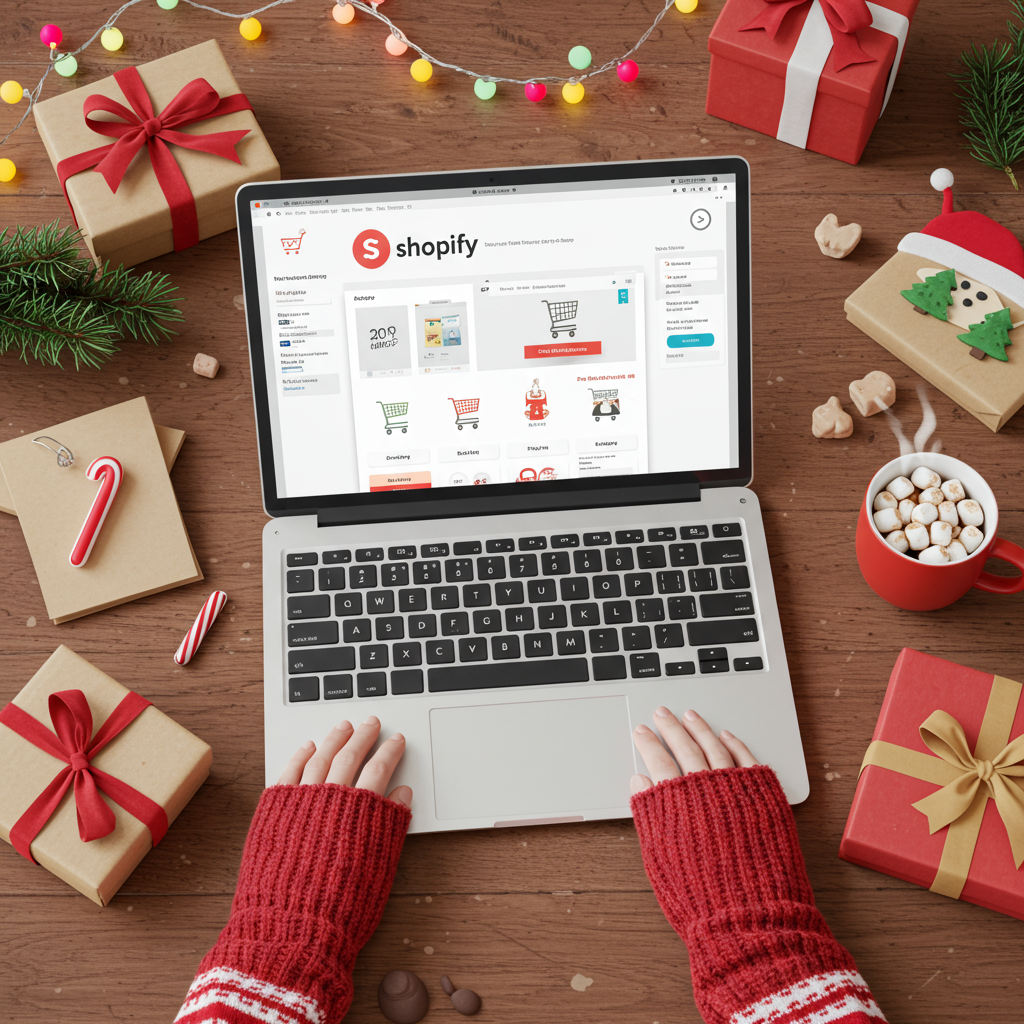As a fellow merchant, I’m sharing my essential strategies to ensure your online store thrives during the busiest shopping season of the year.
The holiday season is undeniably the most exhilarating, and often the most profitable, time of year for e-commerce businesses. It’s a period of immense opportunity, but also one that demands meticulous preparation.
As a Shopify merchant myself, I’ve learned through experience that success during this peak season isn’t just about having great products; it’s about having a store that’s ready to handle the influx of traffic, orders, and customer inquiries.
That’s why I want to share my comprehensive guide on how to prepare your Shopify store for the upcoming holiday rush. Think of this as your personal checklist to ensure you’re not just surviving, but truly thriving.
First things first, let’s talk about your website’s performance. During the holidays, shoppers are impatient. A slow loading site or a clunky mobile experience can send them straight to a competitor.
I always start by optimizing my store’s speed. Use Shopify’s built-in tools and consider apps that compress images, minify code, and leverage browser caching. Every millisecond counts.
Next, ensure your store is perfectly responsive across all devices. The majority of holiday shopping now happens on mobile phones, so a seamless mobile experience is non-negotiable. Test it thoroughly!
User experience (UX) is paramount. Is your navigation intuitive? Can customers easily find what they’re looking for? Implement clear categories, a robust search bar, and prominent calls to action.
Your product pages are your virtual storefronts. Invest in high-quality, professional product photography from multiple angles. Consider adding lifestyle shots to help customers visualize the product.
Write compelling, detailed product descriptions that highlight benefits, not just features. Anticipate customer questions and answer them proactively within the description.
Don’t underestimate the power of social proof. Make sure customer reviews are prominently displayed on your product pages. Encourage new reviews with post-purchase emails.
Now, let’s tackle inventory management – a critical component of holiday success. Accurate forecasting is your best friend here. Look at last year’s sales data, current trends, and any marketing plans you have.
Overstocking ties up capital, but understocking leads to missed sales and disappointed customers. Aim for a balance, and always have a buffer for your most popular items.
Communicate proactively with your suppliers. Confirm lead times, minimum order quantities, and their holiday production schedules. Place orders well in advance to avoid last-minute panics.
Consider having backup suppliers for your top-selling products, just in case unforeseen issues arise. Diversifying your supply chain can be a lifesaver.
Moving onto marketing and promotions. Start early! “Black Friday in July” or “Early Bird Holiday Deals” can capture sales before the main rush and spread out your fulfillment workload.
Create enticing bundles or gift sets. These are perfect for holiday shoppers looking for convenient gift solutions and can increase your average order value.
Develop comprehensive gift guides. Categorize them by recipient (e.g., “Gifts for Him,” “Stocking Stuffers”), price point, or interest. Promote these heavily on your site and social media.
Your email marketing strategy needs to be robust. Segment your audience and send targeted campaigns: abandoned cart reminders, holiday promotions, and exclusive subscriber deals.
Automate as much of your email flow as possible – welcome series, browse abandonment, and post-purchase follow-ups are essential.
Social media is your visual playground. Plan your content calendar well in advance, showcasing products, behind-the-scenes glimpses, and holiday cheer. Use relevant hashtags to boost discoverability.
Don’t forget paid advertising. Set up retargeting campaigns to bring back visitors who browsed but didn’t purchase. Consider new customer acquisition campaigns with holiday-specific messaging.
Shipping and fulfillment can make or break the holiday experience. Clearly state your shipping policies, deadlines for holiday delivery, and any potential delays on your website.
Offer various shipping options, including expedited services, and be transparent about the costs. Consider offering free shipping over a certain order value to incentivize larger purchases.
Invest in appropriate packaging. Branded packaging can enhance the unboxing experience and leave a lasting positive impression.
Prepare your customer service team. Anticipate common questions and create a comprehensive FAQ section on your website. This can significantly reduce the volume of direct inquiries.
Consider implementing live chat for immediate support during peak hours. Ensure your response times for emails and social media messages are as quick as possible.
Clearly outline your returns and exchange policy, especially for holiday gifts. A generous and clear policy can build trust and encourage purchases.
What do you think about these strategies so far? Are there any areas you’ve found particularly challenging or rewarding in past holiday seasons? I’d love to hear your insights.
Finally, don’t forget the post-holiday period. Be ready to handle returns and exchanges efficiently. This is another opportunity to provide excellent customer service.
Analyze your holiday sales data. What sold well? What didn’t? Which marketing channels performed best? Use these insights to inform your strategy for the next year.
The holiday season is a marathon, not a sprint. By preparing thoroughly across all these areas, you’ll not only maximize your sales but also ensure a smoother, less stressful experience for both you and your customers.
I wish you the very best for a successful and prosperous holiday season!






